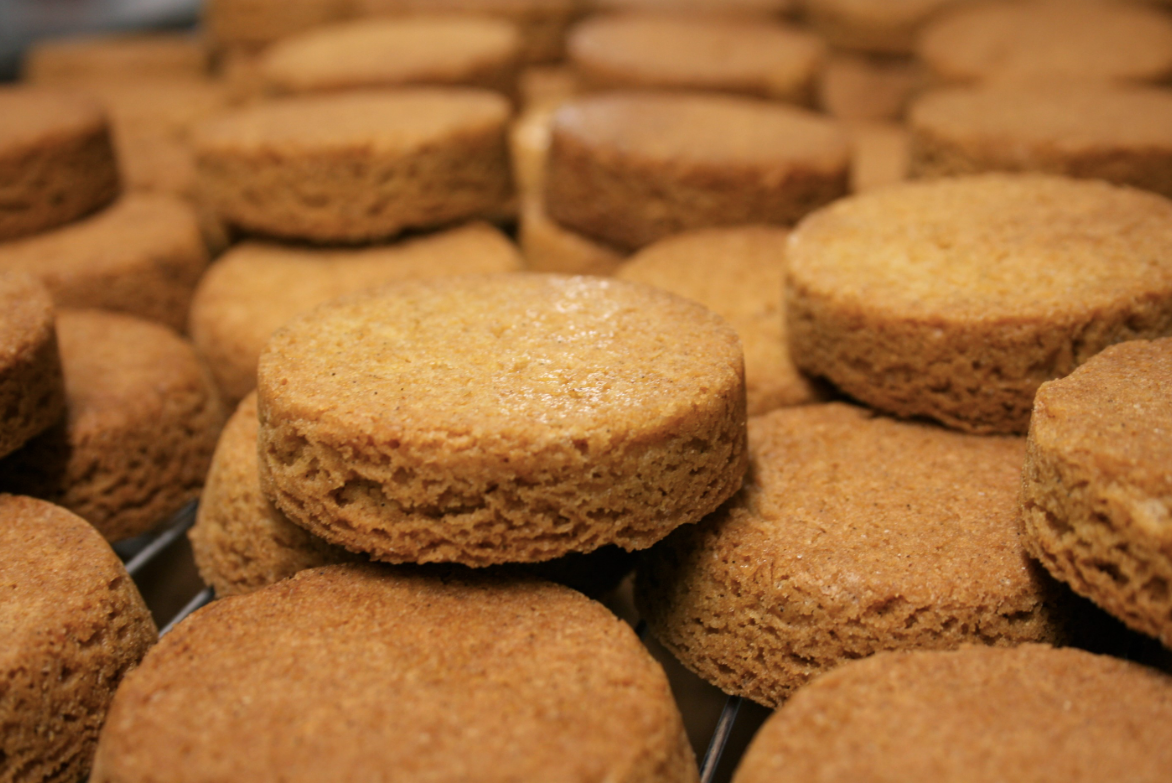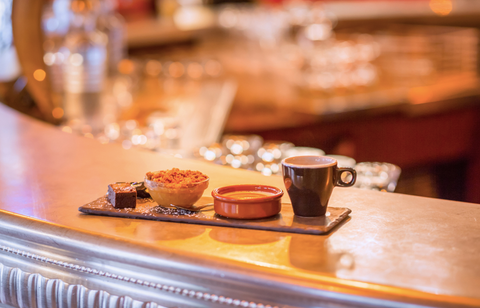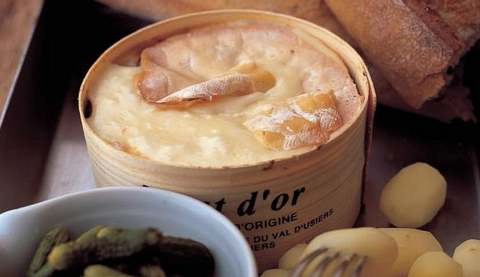Palet Breton biscuits
Palet Breton is the most popular biscuit in France. It's a rustic biscuit from Brittany, a region in western France known for producing butter and other dairy products. This is an easy recipe to follow, and despite being an authentic French treat, it's not too much trouble to make at home.
This dough is made without eggs and is therefore very easy to handle! The recipe calls for a little bit of baking powder which helps the biscuits rise slightly during baking.
A palet Breton (or galette bretonne) is a traditional French biscuit originating in Brittany. The biscuits are round, flat, and usually heavily imprinted with a fork. The word galette, like the word crêpe, has also come to mean a Breton pancake made with buckwheat flour in French Canada.
It's hard to go wrong with a classic. We can use this recipe
- 2 cups all-purpose flour, plus more for dusting
- 1/4 cup sugar
- 1/4 teaspoon salt
- 1 cup (2 sticks) cold unsalted butter, cut into pieces
- 1 large egg yolk
- 1 teaspoon vanilla extract
Preheat the oven to 350 degrees F. Line a baking sheet with parchment paper.
Meanwhile, in a large bowl or the bowl of a stand mixer fitted with the paddle attachment, beat the butter and sugar until light and fluffy. Add 1 egg at a time, beating well after each addition; add 1 teaspoon vanilla.
In another bowl, whisk together flour, baking powder, and salt; add to the butter mixture. Mix until combined. Do not over mix.
Wrap the dough in plastic wrap and chill for 1 hour or up to overnight.
Roll out dough on a floured surface to about 1/8-inch thick. Cut with floured 3-inch round cutters or cookie cutters of your choice. Place on a prepared baking sheet. Beat together the remaining egg and remaining 1 teaspoon vanilla; brush each biscuit generously with egg wash. Sprinkle generously with sanding sugar or turbinado sugar (or both). Bake until golden brown, 15 to 20 minutes; cool slightly on a baking sheet before transferring to a rack to cool completely.
Bread for palets Breton
Palets Bretons are French cookies, traditionally made with buckwheat flour. Their shape resembles a small hockey puck and they are typically sandwiched together with jam or chocolate. These galettes bretonnes (or palets Bretons) were inspired by this recipe from Julia Child's Mastering the Art of French Cooking. I made two variations: one where I followed her recipe to the letter and another where I replaced the butter with coconut oil.
This is the best bread I have ever made. It takes a little bit of time and patience, but it is worth it! I have tried so many different recipes for bread and nothing compares to this one.
I followed the directions exactly, except for the baking time. I baked mine for 32 minutes (instead of 40-50), which was perfect for me. I like my bread crispy on the outside and soft on the inside.
Here are some important tips:
- Proofing: Make sure your waterproofing container is big enough that your dough has some room to rise (at least 50% bigger).
- Dough: If you have time, let your dough rest in the fridge overnight before shaping. This will make it much easier to shape and put into molds without tearing the dough. Also, if you are going to use molds, oil them very well before putting in the dough or else you won't be able to get them out!
- Baking: The recipe says to bake at 375F, but mine turned brown long before it was ready so I turned it down after 15 minutes to 350
Differences between Palets Breton & Galettes
Palets Breton and galettes are two different versions of the same food: a free-form, savory tart that's native to Brittany, France. Both are made using buckwheat flour dough that's baked into a round shape. The similarities stop there.
Palets Breton
The palet Breton is a thin, crisp cookie, often made with unsalted butter and sometimes flavored with vanilla or lemon zest. The palet Breton is also known as palet de Bretagne, galette de Bretagne, galette bretonne, and palet bretzel.

Galettes
The difference in ingredients and preparation makes the galette quite different from the palet Breton. The galette is much more substantial than the palet Breton; it has a crust that's more like pie dough than cookie dough, which means it must be baked on a baking sheet or pizza peel to keep the bottom from burning before the crust cooks through. The filling for galettes includes both sweet ingredients — apples and chocolate are popular — but also savory ingredients such as cheese, eggs, and ham.
- The differences between palets Breton and galette are in the ingredients, preparation, and tradition. The biggest difference is in the dough: a palet Breton is made with shortbread dough, while a galette bretonne uses a buckwheat pancake batter.
Palet Breton
The palet Breton (Breton cookie) is made of shortbread dough similar to sugar cookies. The cookies are round and flat, with a diameter of about 2 inches. They are often marked with a cross on top. Sometimes, they can be found in other shapes such as hearts or stars.
Palets Breton has existed since the beginning of the 19th century, but it was not until 1929 that they were associated with Brittany by the famous biscuit company LU. The company was then known as LU Bretagne, and its logo included four Breton waves.
Galettes Bretonnes
A galette bretonne (Breton Galette) is a savory pancake made from buckwheat flour, which gives it its distinctive gray color. Buckwheat has no relation to wheat and does not contain gluten; thus buckwheat pancakes are suitable for those who do not want to consume or cannot tolerate gluten.
Sablés cookies
Sablés are a French term for “sandy” cookies. They are very different from American cookies since they are not chewy and soft. Instead, sablés are dry in texture and crumble easily. They are also savory, meaning that they have little to no sugar in them.
Sablé dough is made of butter, flour, and sugar. This dough can be shaped into any form or cut out using cookie cutters. There is no leavening agent added to the dough, so it does not rise during the baking process. It stays flat during the entire baking process.
The basic steps of making sablés include:
- Making the dough
- Chilling the dough
- Cutting out shapes using cookie cutters
- Baking the cookies
Difference between shortbread and Sable
- The main difference between shortbread and sable is that shortbread is a butter-based cookie, while sable is made of sugar, flour, and egg yolks. In general, it is believed that cookies originated from the Dutch word koekje which means little cake. However, the origin of the word cookie itself is uncertain.
- The word cookie comes into English via the Dutch word koekje which means little cake. The name makes sense because cookies are small versions of cakes. This can be traced back to the 7th century when Middle Eastern bakers made thin, flat cookies with rosewater and spices.
- Sable and shortbread are both types of cookies. The ingredients and preparation can be very similar, but the final product is very different.
- Shortbread is a type of cookie traditionally made with one part white sugar, two parts butter, and three parts flour. It's usually baked in a round or square pan, cut into wedges while still warm, and then allowed to cool completely before serving or packaging.
- Sable is a type of French cookie that's similar to shortbread but with the addition of egg yolks. In French, "sable" means sandy (like sand), a reference to the crumbly texture of this cookie and Sables tend to be crispier than American-style shortbread cookies.
What Butter is best to Use for Palets Bretons?
We love the traditional version of palets Bretons, but we've also made them with various types of butter: salted and unsalted. They all tasted great, but I found that the salted butter tended to spread more while baking. The unsalted butter was a little stiffer, so I got a more perfectly round cookie with it.
This is not to say that you can't make these cookies with salted butter. You can! If you decide to use salted butter, reduce the amount of salt in the recipe by 1/4 teaspoon.
One of the most important ingredients in making a Palet Breton is butter.
In French, we call it: beurre de baratte.
- The beurre de baratte (butter) should have a high content of fat, around 82% to 84%.
- This kind of butter comes from the cream and is made by churning the cream slowly in a traditional French churn called a baratte.
- This process ensures that the butter retains its natural color and flavor, which is essential for making Palet Breton.
- The 82% to 84% fat butter I use for my Palet Breton is called “beurre demi-sel” in France.
How to Serve Palets Bretons?
The only thing you should do with the butter makes sure it is at room temperature. There is no need to spread it on the palette. It will melt and mix with the palette during baking. It is a very simple pastry, just flour, butter, and eggs; it's not like puff pastry or choux pastry that needs special treatment because of the water/butter ratio.
The Palets Bretons should be served at room temperature unless the recipe specifically says otherwise. A great thing about this butter cookie is that it doesn't require complicated preparation and can be eaten straight away.
- Palets Bretons, French butter biscuits, are a little bit like shortbread. They’re a simple biscuit with no filling and are often served plain, although you can also dip them in chocolate or ice cream. Some palet's Bretons are round and some are rectangular. The rectangular ones are often cut into triangles by bakers to make the kind of shape that you might recognize from other biscuits such as speculaas.
- I love to serve these with coffee after dinner. They’re quite sweet and very buttery so it’s best to serve them with something strong to cut through the sweetness. Once you’ve tried these, I think you’ll be hooked!
Ideas for Palets Bretons Biscuit Toppings
Palets Bretons Biscuit Toppings is a new business venture by me, Anne-Sophie Lemaire, a French baker who has been baking for over 20 years. She decided to start her own business and take on the challenge of launching a new product.
I looked for the most suitable raw material to bake with, coming from humble origins. I chose wheat flour because it is my favorite flour. I decided to produce my first biscuit with its' base in wheat flour, making it delectable with a crunchy top and buttery taste.
I also wanted to give people biscuit toppings that are easy to eat and have a long shelf life. I thought about all these things and came up with the idea of adding some nutmeg flavor but also ginger, ground pepper, and salt because they bring an important flavor balance to the biscuits.




